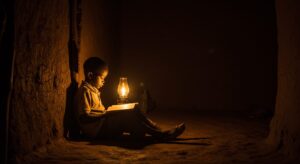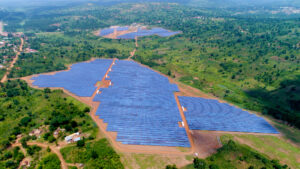BY HUMPHREY KARIUKI
Some of us were in primary school when Neil Armstrong became the first man to step on the moon. It was 21 July 1969 – 53 years ago – but even we as children knew that this was a day when history was made.
“A small step for man,” he said as he put his foot on the lunar surface, “but a giant leap for mankind.”
From the earliest days of space travel, astronauts told us about the things here on earth they could see as they circled the planet. The lights of New York City, the Great Wall of China and the snow caps of both Kilimanjaro and Mount Kenya.
They could also see the Sahara Desert and, tragically, photos from space over the past half-century have shown that all deserts in Africa are growing. Fast! Indeed, there are parts of our continent that have been left looking like a moonscape.
The lead cause is deforestation, and before we get angry with those who are axing our trees for firewood, let us remember that more than 600-million Africans live without electricity, this is why our group is so deeply involved with power projects across the region.
One of the best ways we can change the landscape is to replace those trees. Not just with any plants but with indigenous species that have for millions of years evolved with our delicate ecosystems.
In just five decades, we in East Africa have lost an estimated 70 per cent of our forest.
You might think that planting a few trees here today hardly makes a difference, but these seedlings are going to make a significant difference that you would have contributed to.
They say you can’t go back in time. I say WE CAN, and 50 years from now, long after I am gone from this world, my dream is that Kenya will be back to where it was at the time of that first moon walk in 1969.
Let me dwell a moment on the special relationship we have with trees.
Yes, they provide firewood for millions of homes, and we need to make sure as a group we are relentless in our pursuit to power Africa from sustainable and reliable local sources.
But it goes beyond that. For me – and I think I speak for many Africans – sitting with friends and family around a log fire in the wilderness connects us with our ancestors. It is something spiritual.
Plants also lie at the heart of traditional medicine. So much so that, in southern Africa, “muthe” is the word used both medicine and for tree. In Swahili, we say “miti” as the plural for trees. And a herbalist is mganga wa mitishamba, a doctor of plants that grow in the wild.
The success of the incredible work the Mount Kenya Wildlife Conservancy is doing with the Mountain Bongo breeding depends on suitable eco-systems. The trees we are planting here today will form a safe corridor connecting the Conservancy to the Sanctuary, making the translocation of the animals seamless.
Reforesting our areas also ensures the security of our water towers and in turn our water supply. Water as we all know is the source of life, without water, we all perish
To borrow from that moon-landing, these trees we have planted are one small step. But our program of reforestation will be a giant leap for our country, our people and for our wildlife.
And, when these trees are grown, I hope that astronauts of the future will look down and say, “Ah yes, there are the lights of New York and there is the Wall of China. And look, there is Mount Kenya and its great cover of forest.” What a legacy we all bequeath to our future generations.



